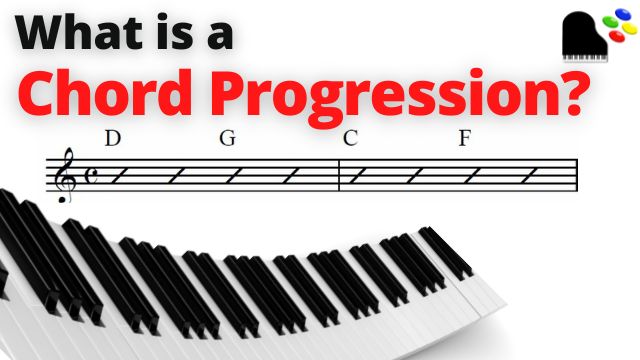Chords are typically defined as three or more tones that are played in unison. They can also be defined as harmony. Any instrument is capable of playing chords either as a stand alone instrument or combined with other instruments. This also includes human voices.
A Chord progression is a series of chords that are played in a sequence that form the basis of harmony in a song or piece of music. They are also defined as chord changes due to the fact that they change as they move in succession. Two or more successive chords qualify as a chord progression.
Chord Theory
Chords are derived from keys of music. In other words, chords are constructed of the notes that exist within any given key. For example, take all of the notes in the key of C Major.
Key of C Major

Each note or tone as it’s also referred to, has a corresponding chord that it’s based on. This is called diatonic harmony. Diatonic simply means in the key.
Diatonic Harmony of C Major
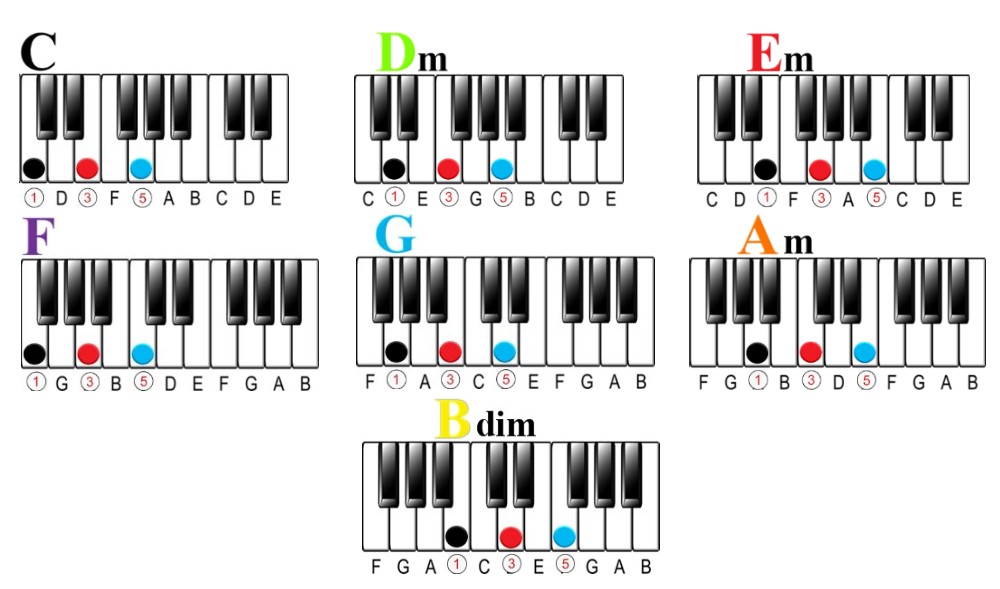
Notice that each chord has three notes in them. These are referred to as triads. These are combinations of Major and minor triads with only one diminished triad. Diatonic triads are formed by skipping every other note in the key. This is very easy to see in the key of C Major because it consists of all white keys.
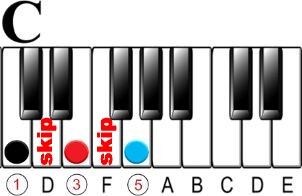
The same concept of skipping every other key to construct triads apply to any other Major key. However, the difference is that all other Major keys of music have combinations of white and black keys on the keyboard. This makes the process of skipping keys to construct triads more of a challenge that have greater combinations of white and black keys.
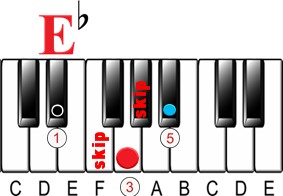
Primary Chords
The primary chords are those that are the most used in every Major key. The first, fourth, and fifth chords are the primary chords. These chords are all Major.
The Primary Chords of C Major

Secondary Chords
The Secondary chords are those that are the second most used chords in every Major key. They’re more supportive of the primary chords. These chords are all minor with the exception of a diminished chord.
The Secondary Chords of C Major
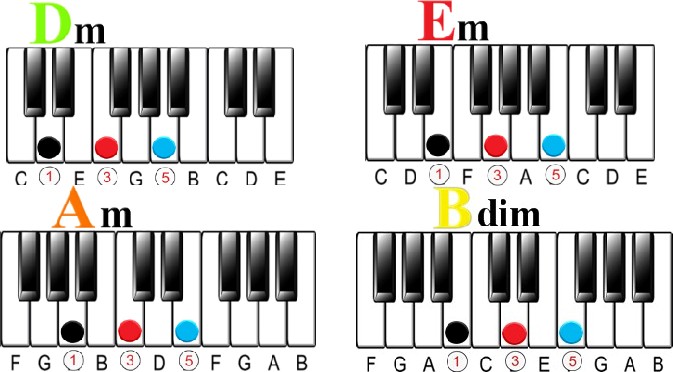
The Number System
Each tone in a key of music has a corresponding number. At the same time, each chord also has a corresponding number.
Key of C Major (numbered)

7 Diatonic chords of C Major (numbered)
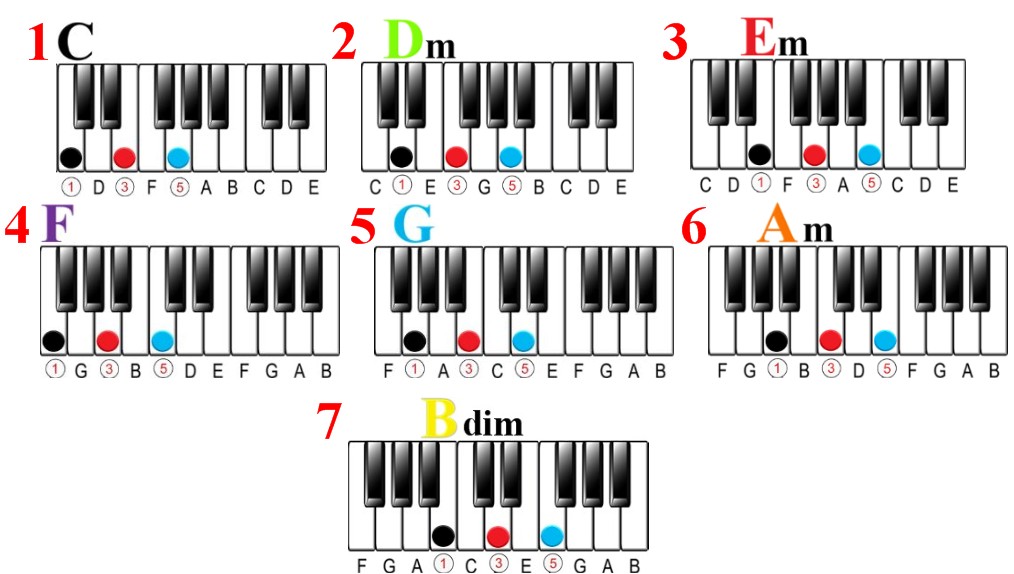
Chord Progressions in Popular Music
Chord progressions have evolved over time. This is especially true with popular music. The most fundamental chord progression in popular music is the 1-4-5 chord progression. Again, these are the primary chords that I mentioned earlier.
1-4-5 Chord Progression
The 1-4-5 chord progression can be used to harmonize the melody of virtually any song. The reason for this is that the primary chords as a whole contain every note within the Major key of music.
The particular chord that harmonizes any given melody note depends upon the chord that also possesses that melody note. For example, if your melody note is E, the most likely chord to harmonize it would be a C triad because it contains an E.
C Major with E melody

If your melody note is an A, the F Major chord is the most likely chord to harmonize it. Why? Because A is found in the F Major chord.
F Major with A melody

What if your melody note is a G? Which primary chord would harmonize it? This is a bit of a trick question because there are two primary chords that contain a G. Do you know which two?
If you answered C and G Major triads, you’re absolutely right. Both of these chords will harmonize a G melody note. Your ear would be the final judge as to which chord you would choose between the two in any part of a song.
C & G Major triad with G melody


The key to understanding how to harmonize a melody with the primary chords is to just ask yourself which one (or more than one) of the primary chords does your melody note fit into. This is a simple strategy for simple chords. But it’s a great place to start.
Using the Number System with Chord Progressions
The Number System is a method of transcribing each tone in a key of music from notes to numbers. The purpose for doing so is to simplify and create a system of denoting any key of music, chord, chord progression, etc. that is universally understood no matter what key a given piece of music is written in.
For example the key of C Major has seven different notes and can be notated numerically from 1 to 7.
Key of C Major numbered

But as far as chord progressions are concerned, they’re notated in a different way than simple numbers. Chord progressions in music are typically notated with Roman numerals. Each tone is given a corresponding Roman numeral.
Roman numerals Used in the Number System

Diatonic Chord Progressions
The diatonic harmony that I referred to earlier utilizes upper and lower case Roman numerals to denote the chords.
Lower case Roman numerals represent minor chords

If a particular chord falls out of the definition of diatonic harmony, the upper case Roman numeral would be the default used to represent it.
For example, if a chord is suspended, it’s neither Major nor minor. So an upper case Roman numeral would be used.

For more about the history of the number system, this Wikipedia page will give you more insight into it.
Non-Diatonic Chord Progressions
A non-diatonic chord progression is one that contains chords that aren’t native to the key. For example, in the key of C Major you may have a B flat Major chord. It would be considered a non-diatonic chord because B flat is not in the key of C Major.
It’s quite common to have chords that are non-diatonic. As long as you have other tones that are in the key (aka common tones), they can be a refreshing way to give variety to the harmony of a song.
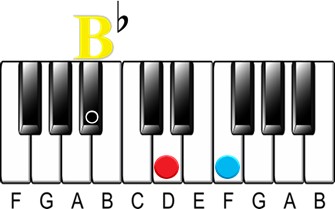
Chord Progressions with the Circle of 5ths
The circle of 5ths represent many different elements of music. Among those are chord progressions. In fact, it’s a great tool to use to learn chord progressions. This is because chords will very often follow the sequence of the circle of 5ths in either direction.
The circle of 5ths is a geometrical representation of the 12 different pitches in music as they are referred to by the first 7 letters of the alphabet with or without a sharp or flat accompanying it.
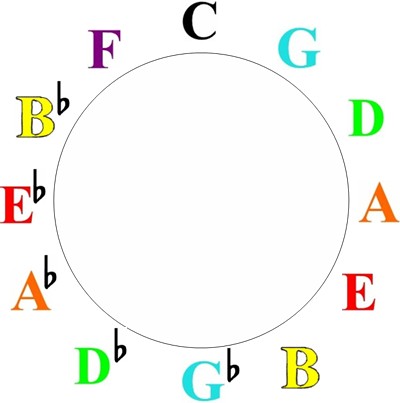
With C being at the top and center of the circle, all other letters are separated by intervals as they appear on the keyboard. Intervals are simply the distances between notes.
If we look at the letters as notes, they’re separated by 5th intervals clockwise and 4th intervals counter-clockwise.
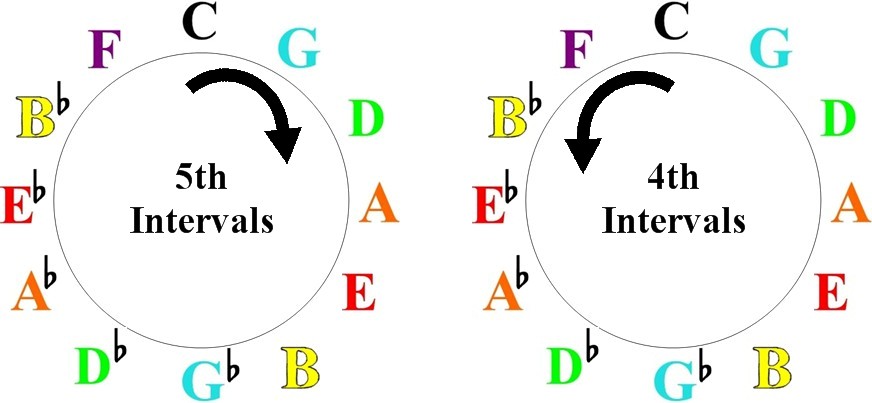
If we look at these letters as chords, each one represents the tonic chord of every Major key of music. The tonic chord is the root chord of the key. The tonic chord of C is C Major, G is G Major etc.
The advantage of using the circle of 5ths from a chord context is that it demonstrates how chords move. What I’m referring to is how chords progress in music.
Moving clockwise around the circle, the chords are progressing in 5ths.
Moving counter-clockwise around the circle, the chords are progressing in 4ths.
Counter-clockwise movement is how chords tend to progress more often than clockwise movement. You’ll see this in tons of popular songs.

Experiment with the circle of 5ths. Just play simple triads counter-clockwise around the circle and listen to how each chord smoothly transitions to the next. It will demonstrate to your ears how natural it is to progress from one chord to another.
Contrary to that, you can also play triads as you move clockwise around the circle. Even though it’s also a natural progression, you’ll notice it has a different character and transitional quality than 4ths.

How to Learn Chord Progressions
If I had to nail down two stumbling blocks that make learning chord progressions difficult, I would say that a lack of knowledge of keys of music and the number system are responsible. The two go hand in hand. Without being well versed in both, learning chord progressions is a frustrating experience. Take the time to learn them.
What Chord Progressions Actually Do
It’s helpful to think of a chord progression as an emotional journey within the boundaries of a song or piece of music. When you get down to it, this really is the purpose of harmony in music. A chord progression is simply the vehicle that takes you there.
A chord progression can start on any chord. But it often resolves on the tonic chord. Think of it as home base. Regardless of how the harmony weaves through a song, the tonic chord brings the song to an end. Even if that ending is temporary at the end of a verse or chorus only for the song to continue.
Popular Chord Progressions
I’ve already shared with you the most common chord progression in music with the primary chords. Here are examples with Roman numerals in the key of C Major.
The Primary Chords
I-IV-V

But of course there are other popular chord progressions that you’ll see over and over in all styles of music.
The I-V-vi-IV is among the most used chord progression in pop music. In fact, it’s gone from being occasionally used to being a cliche. The good news is that you’ll find it in many of today’s new songs.
I-V-vi-IV
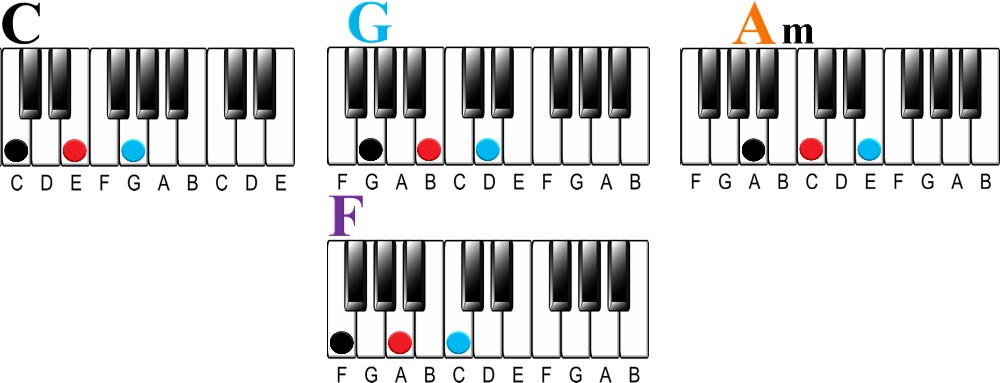
The previous I-V-vi-IV progression can be rearranged in any way. Take the next example where the V and vi chords have traded places.
I-vi-V-IV
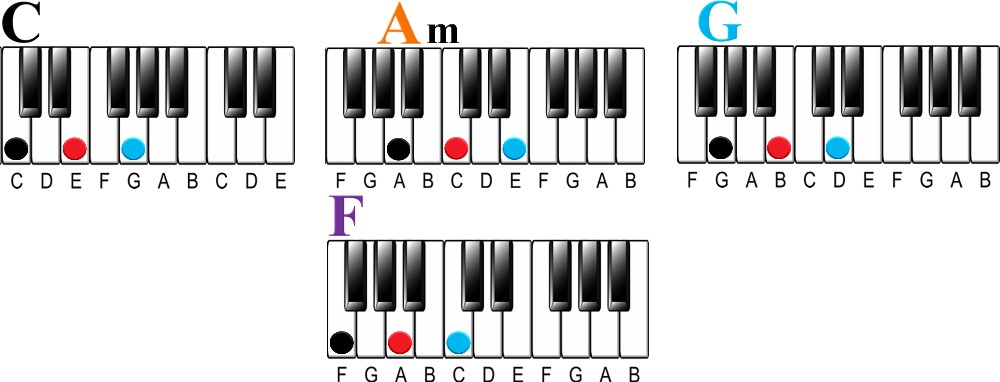
Chords progressions in Major keys won’t always start on a Major chord either. They can also start on a minor chord to give it a darker quality before it proceeds on to Major chords.
vi-IV-I-V
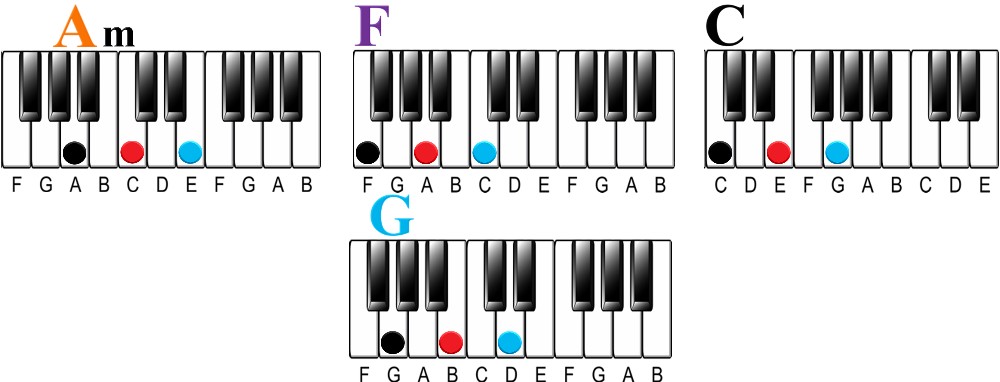
Chord progressions go far beyond just the miniscule examples I’ve given you here. But I think you get the idea about how they work and the possibilities of learning them and creating new ones.
Genre and Chord Progressions
Even though chord progressions are universal in nature, there are those that are indicative of certain genres of music.
Blues
Blues has a basic 12 bar form. Even though blues contains 7th chords, I’ll keep it simple and just give you the basic chords.
I-I-I-I-IV-IV-I-I-V-V-I-I
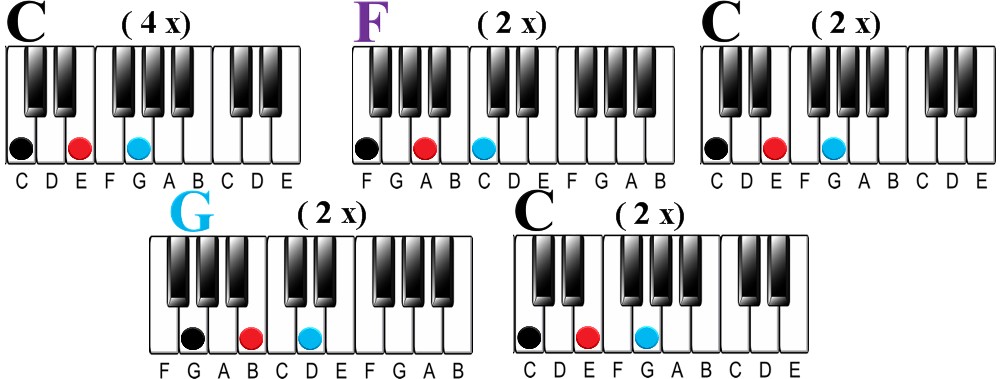
Classic Rock
Classic rock is defined as rock music from the late 60s’ throughout the 70’s. Even though it’s common to hear songs with the primary chords, it evolved by using the chromatic tones such as the flatted 3rd, flatted 7th and flatted 6th. These chords were borrowed from other keys that correspond with the blues scale to give them a more blues feel.
I-VII-IV

Jazz
Jazz uses all kinds of chord substitutions and displacements but if there’s any one chord progression that defines it, it’s the ii-V-I progression. Jazz wouldn’t have its characteristic sound without it. This is also just as common in gospel music.
ii-V-I

Folk
Folk started as an oral tradition with songs without a known author. At different times since then, there has been a resurgence in the popularity of folk music. The most common chord change in folk music is the V-I progression.
V-I

Funk
Funk is one of those genres of music that’s based more on a rhythmic groove than chords. So you may have an entire song that’s just based on a two chord progression. It could be as simple as a I-IV progression.
I-IV

Final thoughts
Chord progressions are a study in and of themselves. As I mentioned before, learn your Major as well as minor keys of music and the number system. It’s not difficult, but takes time and effort. This ensures you to be well prepared to play chord progressions in the style of music that you desire to play most.
Until next time, Go Play!
Greg Lee
Latest posts by Greg Lee (see all)
- What is a minor/Major 7 Chord? - October 26, 2023
- 7 Chord Substitutions that Professionals Use - October 19, 2023
- 5 Simple Chord Tricks to Sound Amazing - October 5, 2023

